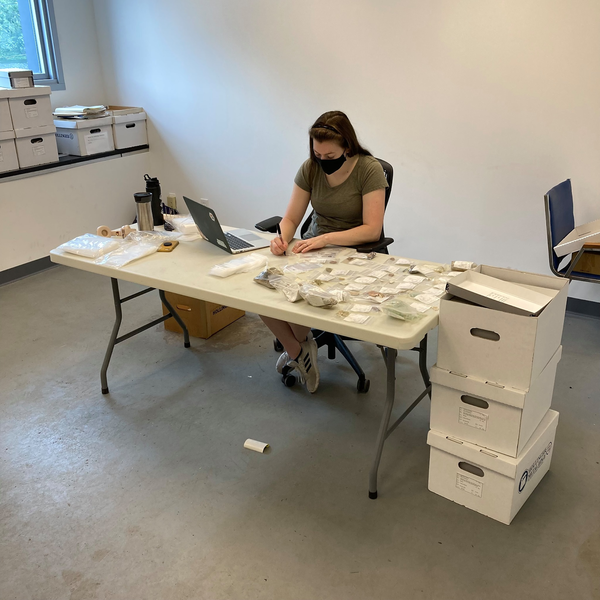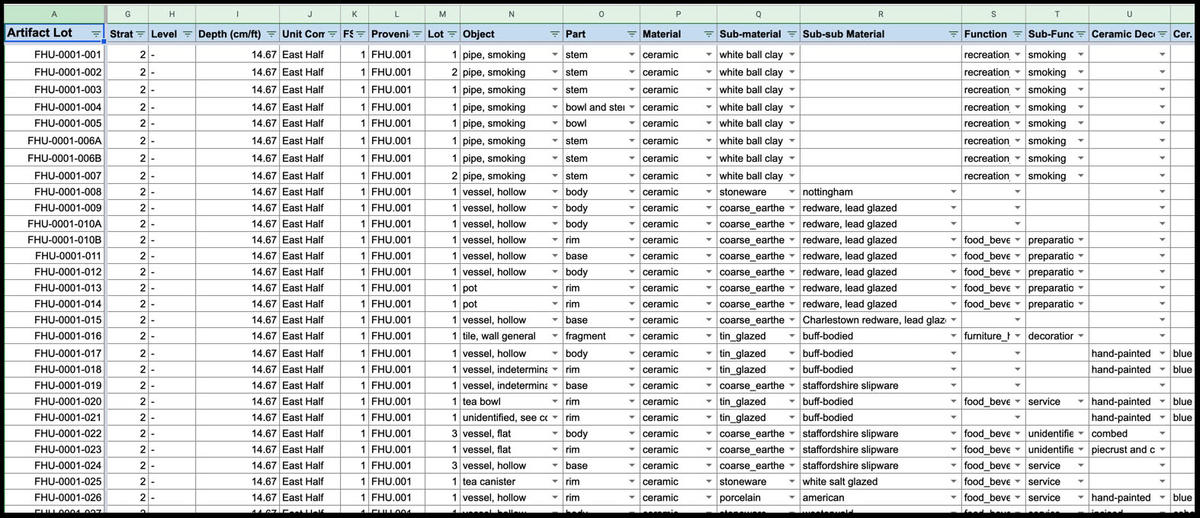City Archaeology Program Brings Boston's History to You
Since the fall of 2019, City of Boston’s Archaeology Program has been hard at work digitizing hundreds of thousands of artifacts thanks to a $350,000 grant from the National Endowment for the Humanities.
You may have seen some of our artifact photographs or even our 3D artifact models, but digitization also includes some serious behind the scenes work as well. Project Archaeologist Lauryn Sharp has identified, sorted, and cataloged over 213,000 individual artifacts.
In the past, many archaeological collections were never completely cataloged or studied. This made research and viewing these collections difficult. In order to fix this issue, the digitizing team took bags of disorganized artifacts from some of Boston’s most significant archaeological sites and carefully identified all of the objects inside them ranging from brick fragments to buttons to Native stone tools. Then every single item is counted, put into a clean bag and labeled by hand, and its description typed into our artifact catalogs one line at a time.
Why do we do this? This is one way that archaeologists organize the data collected during excavations. With an accurate artifact catalog, we know what was recovered during a dig and exactly where on the site every single artifact came from. This way we can tell what activities were happening in different areas of the site and start to understand when and how historic artifacts were deposited in the ground.
The types of data we record are the artifact’s site, the location on the site where the artifact was found, the depth it was found at, the soil layer it was found inside, the material it is made out of, what kind of object it belongs to, which part it is from, if it has any decoration and what type, its color, and many other pieces of data that help us and others understand how old it is, how it was used, and the story it can tell about the people on the site.
Not many cities have their own archaeology program, but Boston is home to some amazing and important histories that need to be documented so they can be shared. Thanks to Lauryn’s painstaking work on hundreds of thousands of artifacts, the artifact information from each site catalog can be transferred to our searchable artifact database at bostonarchaeo.omeka.net. where they can now be accessed by anyone, anywhere, anytime.
Now researchers, students, and curious community members alike have access to every single artifact in some of our most important collections from National Landmarks like the Paul Revere House and the Malcolm X-Ella Little-Collins House, to sites no longer standing like the Endicott Street Brothel or the Town Dock near Faneuil Hall.
Follow this link to see information about Boston's archaeological sites and their data: City of Boston Archaeology Program Featured Digs
This project has been made possible in part by a major grant from the National Endowment for the Humanities: Democracy demands wisdom.





